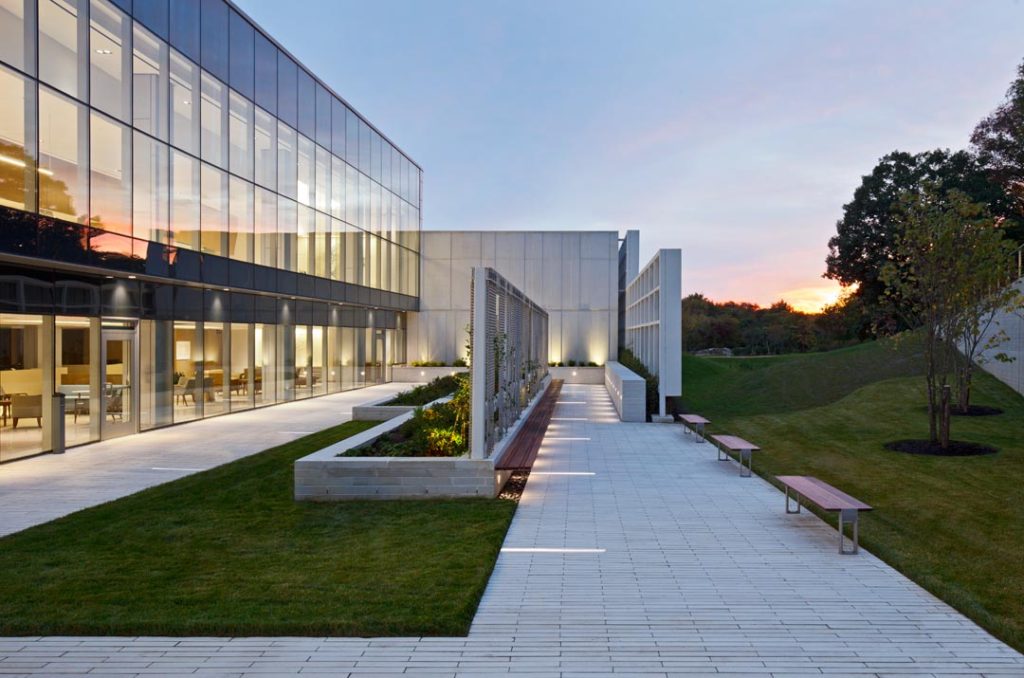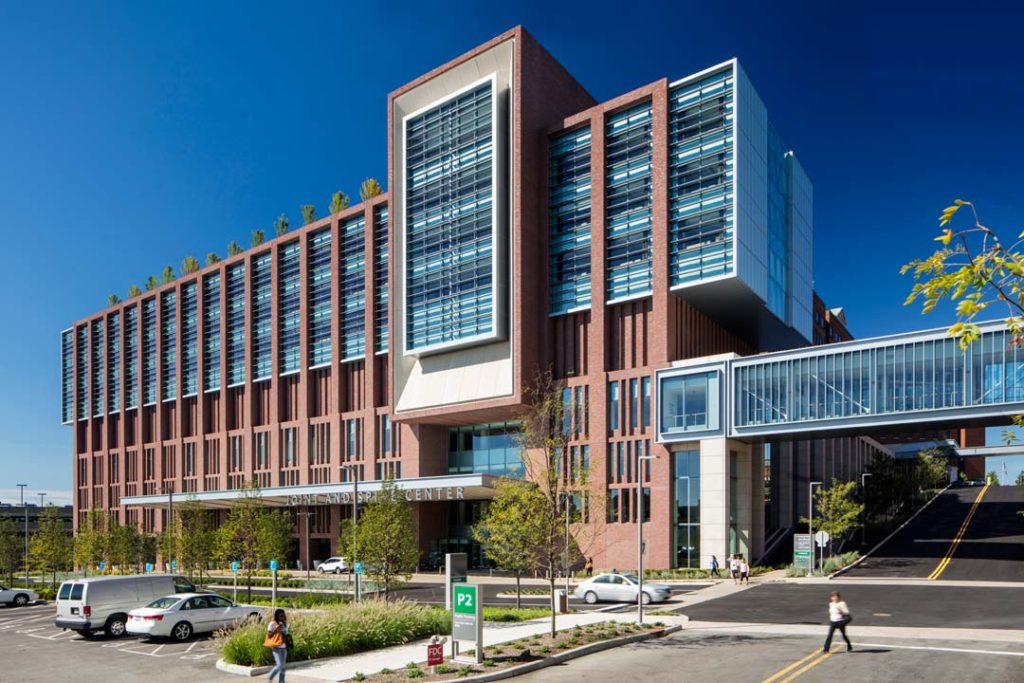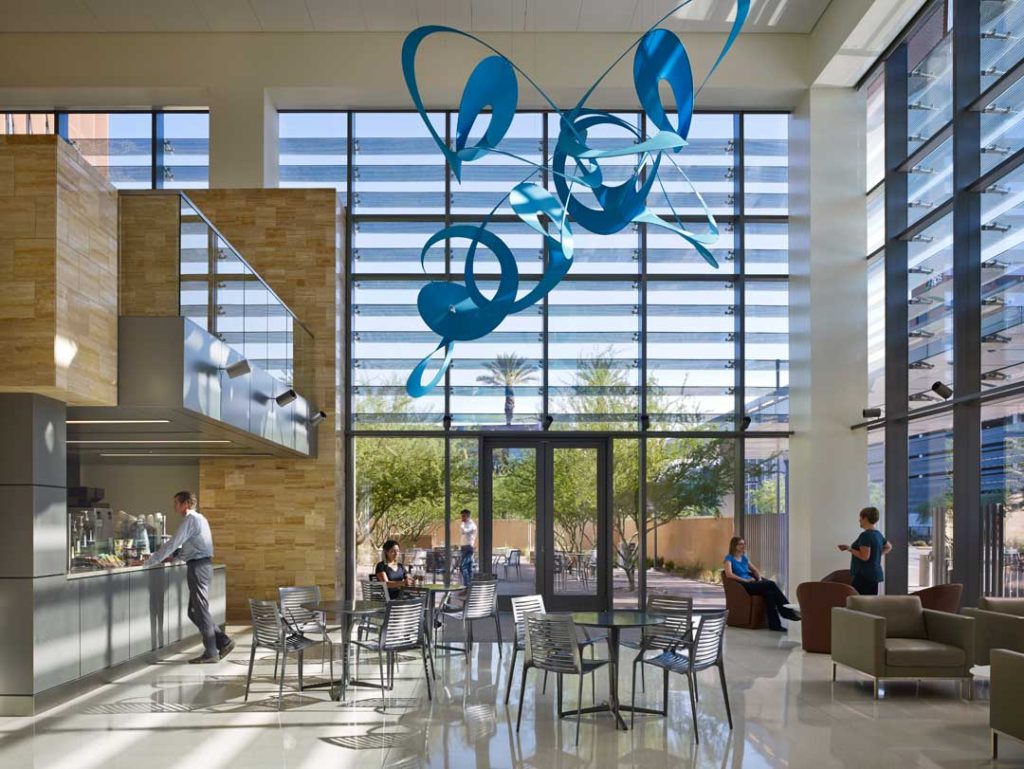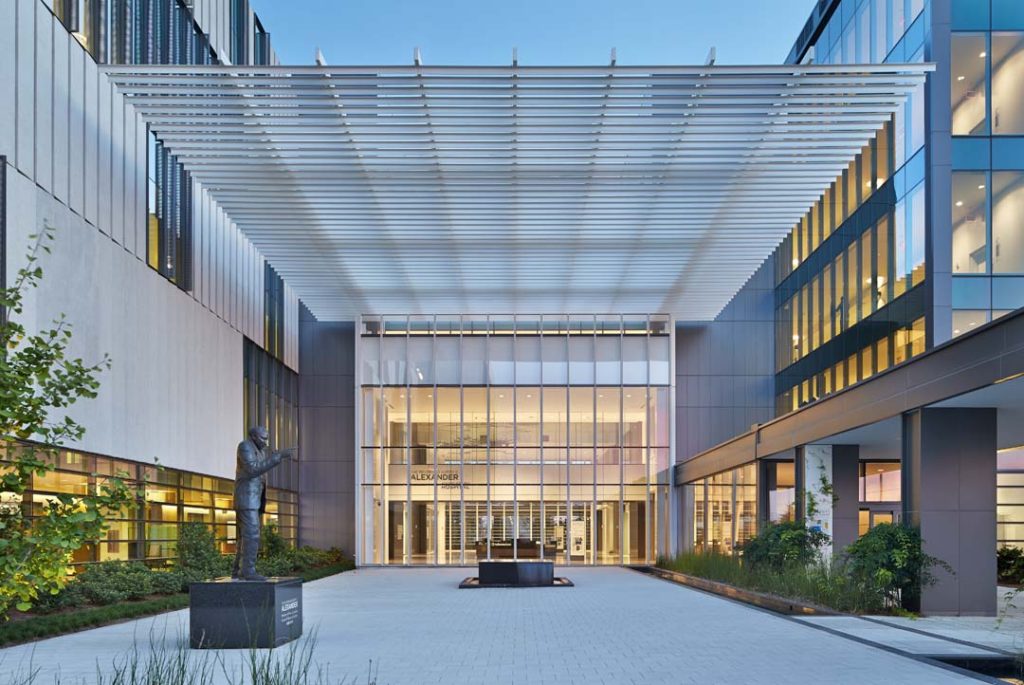The American Institute of Architects (AIA) Academy of Architecture for Health (AAH) has selected the recipients of the AIA National Healthcare Design Awards program. The award program showcases the best healthcare building design and healthcare design-oriented research. Projects exhibit conceptual strengths that solve aesthetic, civic, urban, and social concerns as well as the requisite functional and sustainability concerns of a hospital.
Category B or those “Built, More than $25 million in construction cost “recipients of the AIA National Healthcare Design Awards program are as follows.
Memorial Sloan Kettering (MSK) Regional Ambulatory Cancer Center; West Harrison, New York
EwingCole
Operationally efficient layout helps to reduce the cost of healthcare delivery and support both short- and long-term expansion possibilities at the West Harrison site for Memorial Sloan Kettering’s Regional Cancer Center. The challenge for the design team was converting what was a 1950’s office building with the dated brick and metal panel building with large floor plates, into a state of the art cancer center which upheld MSK’s preeminence as the leader in cancer treatment. The building not only accomplished the stringent task of achieving LEED Gold but also implemented additional healthy-building initiatives such as specifying entirely PVC-free products for both construction and design.

Memorial Sloan Kettering (MSK) Regional Ambulatory Cancer Center; West Harrison, New York/EwingCole. © Ron Blunt
The Christ Hospital Joint and Spine Center; Cincinnati
Skidmore, Owings & Merrill LLP
The Christ Hospital sought to unify their main campus and forge a model for integrated, patient-centered joint and spine care. Skidmore, Owings & Merrill worked with patients, medical professionals, and hospital staff to design the new state-of-the-art Joint and Spine Center. Inside the hospital, spaces for patients are filled with daylight, outside views are maximized to support well-being, and quiet spaces for family and staff are programmed with comfortable furnishings for conversation and rest. The building, a model for future hospitals with its flexible design and commitment to sustainability, is LEED certified. Since opening, the facility has ranked in the 99th percentile for patient satisfaction when compared to comparable hospitals.

The Christ Hospital Joint and Spine Center; Cincinnati/Skidmore, Owings & Merrill LLP. © Tom Rossiter
The University of Arizona Cancer Center (UACC) at Dignity Health St. Joseph’s Hospital and Medical Center; Phoenix
ZGF Architects LLP
The 220,000-square-foot UACC is intended to deliver the highest standard of care within an evidence-based, multidisciplinary model, using the most modern technologies. The building program includes spaces for radiation oncology, diagnostic imaging, endoscopy and interventional radiology, exam and procedure rooms, a support and wellness center, infusion, a clinical pharmacy, and a healing garden. The building was designed to emphasize the user experience, integrate the natural beauty of the landscape, and address the needs of the UACC staff and patients for years to come. An exterior shade system, along with chilled beams, the first to be used in an Arizona healthcare setting, greatly contributed to the sustainability of the facility.

The University of Arizona Cancer Center (UACC) at Dignity Health St. Joseph’s Hospital and Medical Center; Phoenix/ZGF Architects LLP. Nick Merrick © Hedrich Blessing 2015
University Medical Center New Orleans; New Orleans
NBBJ
University Medical Center provides New Orleans with critical safety-net care in a sophisticated 1.5 million-square-foot facility built to withstand natural disasters. Features include inpatient services, cancer care, behavioral health and a Level 1 trauma center. The design promotes holistic healing, from landscaped courtyards to all-private inpatient rooms with natural light and in-suite bathrooms. Wide double-bays and sliding breakout doors enable swift action in treatment zones. Floor-to-ceiling windows in public spaces create transparency and uplifting views, while custom artwork and graphics throughout the hospital celebrate New Orleans’ rich heritage. The project is the state’s largest teaching hospital and training facility for physicians, nurses and allied health professionals.
The jury for the 2016 National Healthcare Facility Design Awards includes: Doug Hocking, AIA, LEED AP BD+C (Chair), KPF; Rosalyn Cama, FASID, EDAC, CAMA, Inc; Tatiana Guimaraes, Assoc. AIA, Perkins+Will; Anthony Haas, FAIA, FACHA, WHR Architects; David Montalba, FAIA, Montalba Architects; Sid Sanders, AIA, Houston Methodist Hospital and Kenneth Webb, AIA ACHA, LEED AP BD+C, HKS.
About The American Institute of Architects
Founded in 1857, the American Institute of Architects consistently works to create more valuable, healthy, secure, and sustainable buildings, neighborhoods, and communities. Through nearly 300 state and local chapters, the AIA advocates for public policies that promote economic vitality and public wellbeing. Members adhere to a code of ethics and conduct to ensure the highest professional standards. The AIA provides members with tools and resources to assist them in their careers and business as well as engaging civic and government leaders and the public to find solutions to pressing issues facing our communities, institutions, nation and world. Visit www.aia.org.
Read more about the recipients of the 2016 AIA National Healthcare Design Awards on PRISM:
Category A: Built, Less than $25 million in construction cost
Category B: Built, More than $25 million in construction cost
Category C: Unbuilt, Must be commissioned for compensation by a client with the authority and intention to build (No projects were selected in this category this year)
Category D: Innovations in Planning and Design Research, Built and Unbuilt




